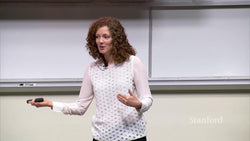YC Lecture 4- Building Product, Talking to Users, and Growing(Adora Cheung)
Share with Friends

📝 In this lecture, Adora Cheung talks about how to go from zero users to many users in a startup. She shares her insights based on her own mistakes and failures in the past.
Highlights
- 💡 The key to success in a startup is to have a lot of time dedicated to immersing yourself in developing solutions to the problem you’re trying to solve.
- 💡 Before starting a startup, it is crucial to identify the problem you’re solving and ensure that it is a problem others have and that you are passionate about solving.
- 💡 Building a minimum viable product (MVP) is essential to get user feedback and validate your idea before launching it to a larger audience.
- 💡 User feedback is critical for iterating and improving your product over time. Actively reaching out to users, conducting surveys, and meeting them in person can provide valuable insights.
- 💡 Different strategies for growth include sticky growth (retaining existing users), viral growth (encouraging users to refer others), and paid growth (acquiring users by spending money). Sustainability, profitability, and creativity are important considerations in choosing the right growth strategy.
- 🌱 Dedicate time to deeply focus on developing solutions for the problem you’re trying to solve.
- 😬 Avoid the novice approach of building in isolation without seeking user feedback, as it can lead to failure.
- 👩💻 Immersing yourself in the industry and understanding the inefficiencies can help you find opportunities for disruption.
- 🤝 Talk to potential users and listen to their feedback to refine and improve your product.
- 💵 When considering paid growth, evaluate the customer acquisition cost (CAC) compared to the customer lifetime value (CLV) to ensure sustainability.





























